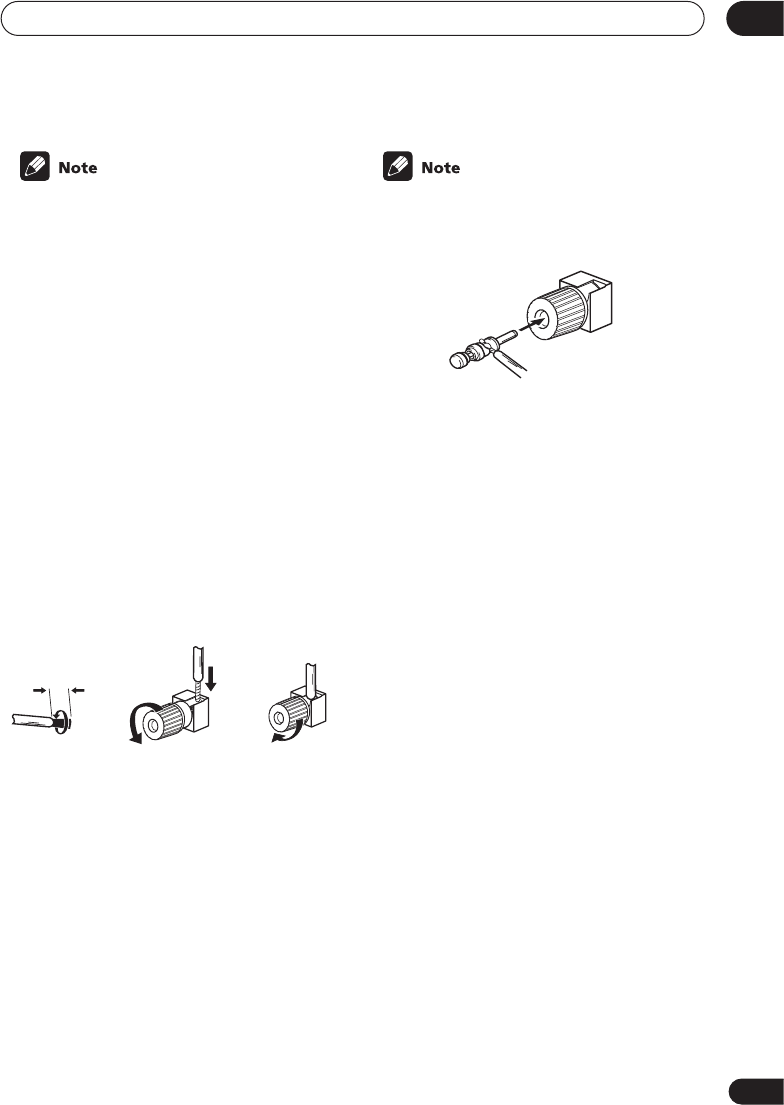
Connecting up
03
23
En
• When using the speaker on your TV as the
center speaker (C), connect the CENTER
PREOUT jack on this unit to the audio
input jack on your TV. In this case the
center speaker shown is unnecessary.
• If you are using only one surround back
speaker, connect the positive wire to the
right channel (+) terminal, and the nega-
tive wire to the left channel (–) terminal
(see illustration on page 12).
• If you select subwoofer (SB SW) in the
Surround back speaker setting on page 46
you can hook up a subwoofer instead of
speakers to the surround back speaker
terminals. Connect the positive wire to the
right channel (+) terminal, and the nega-
tive wire to the left channel (–) terminal
(see illustration on page 12).
Speaker terminals
1 Twist exposed wire strands together.
2 Loosen speaker terminal and insert
exposed wire.
Make sure that all the bare speaker wire is
twisted together and inserted fully into the
speaker terminal. If any of the bare speaker
wire is touching the back panel when you
switch the unit on, the power may cut off as a
safety measure. Use good quality speaker
wire to connect the speakers to the receiver.
3 Tighten terminal.
• The speaker terminals also accept single
banana plugs. (Refer to speaker manual
for details.)
A and B speaker systems
The receiver has two speaker systems: A and
B. A is the main system supporting the full
speaker setup. If you switch on both A and B
speaker systems, only the front speakers and
the (active) subwoofer will be audible. No
sound will come from the center, surround, or
surround back speakers, but multi-channel
sources will be down-mixed to the active
speakers so no sound will be lost. Similarly, if
you choose just the B system you‘ll only hear
the front speakers connected to the B system
and multi channel sources will be down-
mixed to these two speakers.
• Press the SPEAKERS button on the
front panel to switch between speaker
systems (A, B or both).
Hints on speaker placement
Speakers are usually designed with a partic-
ular placement in mind. Some are designed
to be floorstanding, while others should be
placed on stands to sound their best. Some
should be placed near a wall; others should
be placed away from walls. We have provided
a few tips on getting the best sound from your
speakers (following), but you should also
follow the guidelines on placement that the
speaker manufacturer provided with your
particular speakers to get the most out of
them.
3/8 in. (10mm)
12 3


















